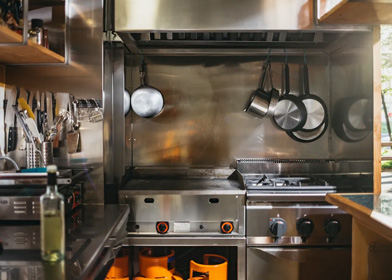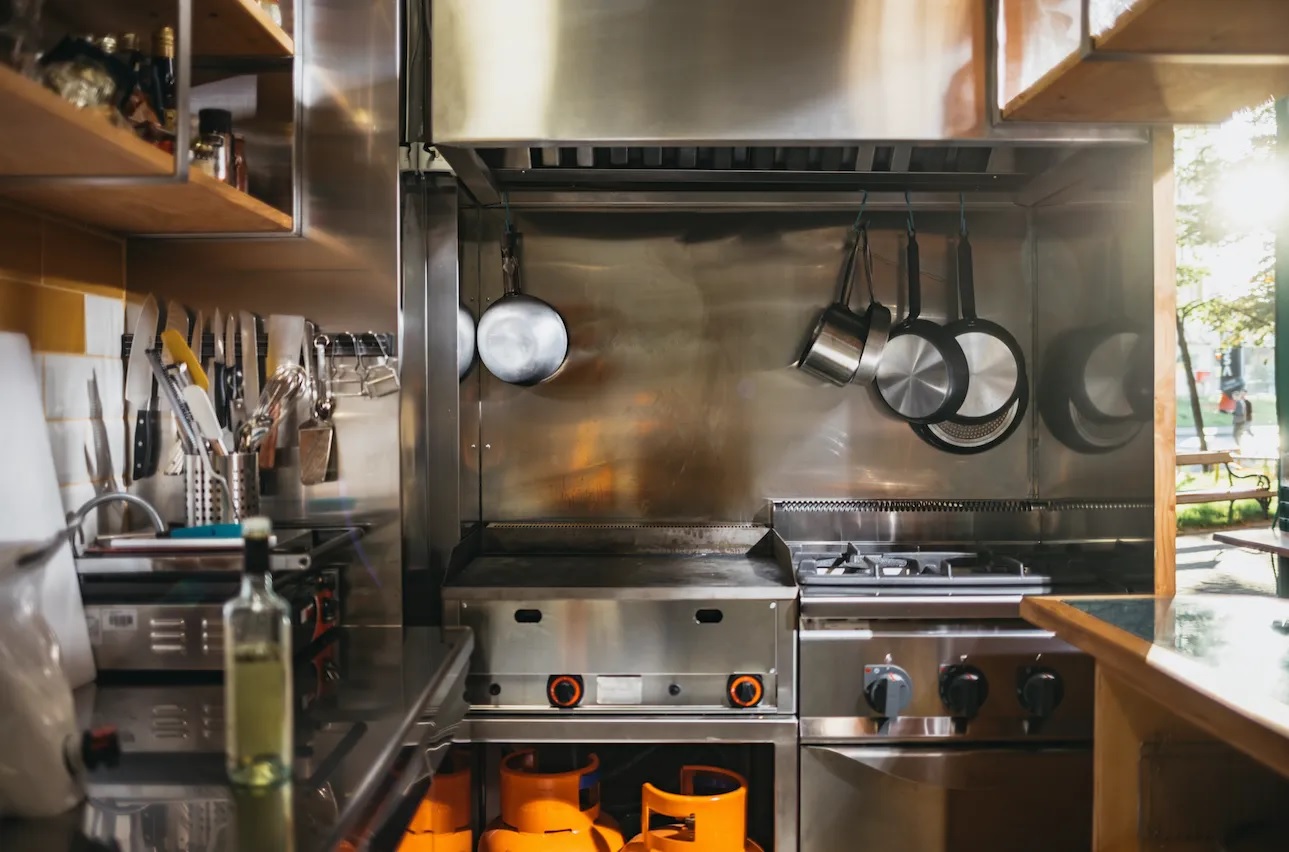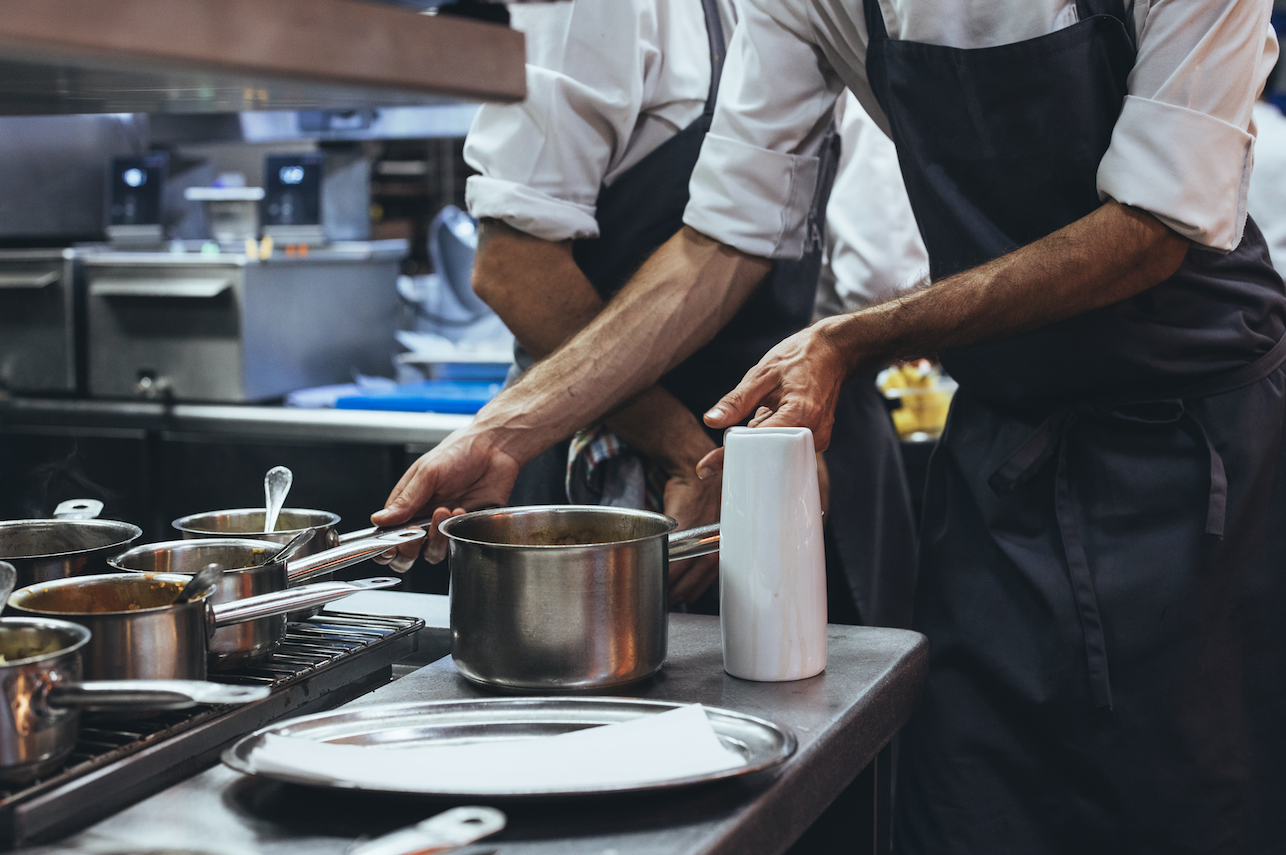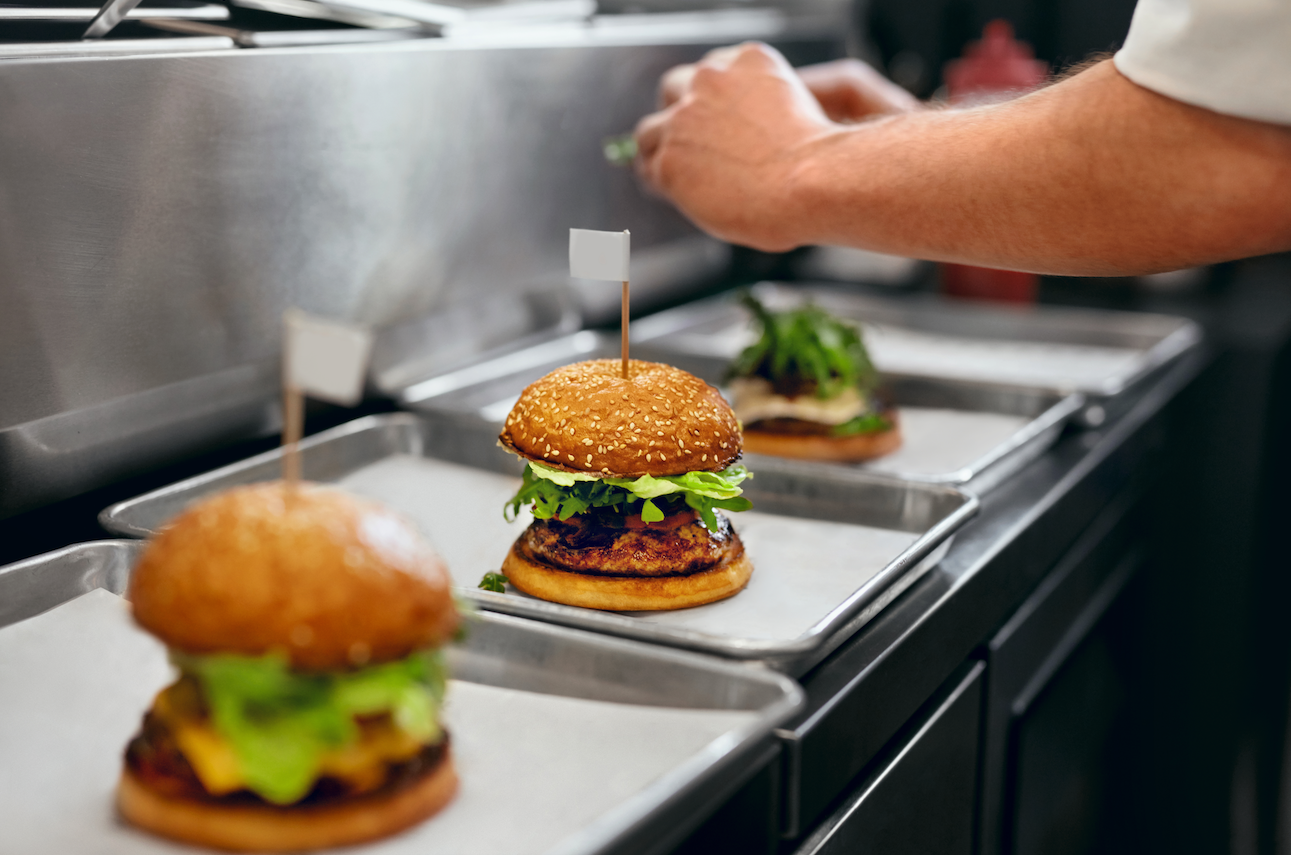
Foodservice Design: A Guide to Successful Commercial Kitchen Projects
When considering starting up your own commercial kitchen or restaurant, whether from within the walls of an existing space or a brand-new building, the attention that is provided to the overall foodservice design is often reflective in the level of success this new business endeavor will deliver.
View and download this guide as a pdf here.
As might be expected, there are numerous details that should be considered as you begin the project. For starters, define the concept. Ask yourself a few basic, high-level questions about what your intended goal is and identify the specific market segment your new venue will serve:
- Will this be a brand new, independent restaurant, or will the focus be on providing an upscale space for the senior living community?
- Is the design geared more toward a learning space, K-12 or higher education? Does your vision better align with serving hospital staff, patients and visiting family members?
- Does the goal of your business fit the model of a restaurant chain? Does success lean more toward a brewpub or craft brewery that also serves a variety of menu items?
First impressions do matter. What first impression do you intend on providing your customers as they enter this new space? Based on your identified market segment, is it important to keep things bright, lively and engaging, or is a more thematic environment – one that is dark, yet cozy – more appropriate? Will the audio levels be quiet and relaxing, or loud and edgy? Will the aromas from the kitchen greet your guests as they enter the space?
Document all of your initial ideas as you begin to develop your foodservice plan. There will be several groups and professionals involved throughout the process. As such, it will be a benefit to identify every decision maker early on and verify that everyone involved is consistently on the same page with every decision that is made.
Keep a financial analysis and accurate records of the costs to eliminate future surprises and ensure every detail and all information is conveyed in a manner that can be easily interpreted and understood. It’s not altogether uncommon for those involved – architects, engineers, interior designers and kitchen equipment specialists – to view things slightly different from one another. The more they know, the better off you’ll be.
DEFINE (and Refine) YOUR MENU
Know your demographics. Evaluate your closest competition and consider how the menu items you intend to offer makes you unique. Use this information to ensure that your foodservice plan won’t be a cookie-cutter example of what everyone else is currently offering. Verify that your highlighted menu items won’t adversely clash with the community you will be serving. Be creative, but not to the detriment of your business.

Your menu will likely evolve over time. However, in order to work through a basic foodservice design, it’s critical to understand, as early as possible, the foundations of what your menu will be. Everything you intend on serving will help define and detail all of the prep and cooking equipment that will be needed to succeed:
- Which items will be hot? Which items will be cold?
- How much will be made from scratch?
- Will anything be outsourced?
- Will the menu change seasonally?
Consider the overall image you want to present to your customers, relative to the dining space, and how it will align with your menu. What should your guests first see as they walk into your space? This level of planning should extend beyond what your menu will include, and also focus on the experience you intend on providing them. Is this is going to be an open kitchen concept or a traditional back-of-the-house kitchen with clearly defined service to the front of the house?
Understanding your menu not only translates to hospitality and restaurants, but to a variety of senior living facilities as well. More and more of these communities have opted for a presentation-style of cooking and are placing their kitchen front and center to the dining room.
Similarly, high schools, college universities and corporate dining spaces are all including a variety of “action stations” into their designs. This can include everything from basic selection and sandwich preparation, to grills and a panini press; anything that moves the food process front and center to the guest.
Assess and make note of the quantity of food that will be produced each day. The type of menu that you decide upon and the quantity of food being prepared will dictate how much space is needed for storage. Consider the frequency of deliveries and whether or not a prep/staging area will be needed if pickup, delivery and to-go will be also be a part of your business model?
KITCHEN FLOW AND STAFFING REQUIREMENTS
Whether it's an existing building or brand-new construction, understanding the layout of your kitchen and identifying the flow of your dining space plays an important role in much of the decision making that will come after. As a starting point, consider the number of steps needed to complete an order – from start to finish – and factor that into identifying where the food is coming in, where it is being prepared and where it is going out.
Existing Buildings
Review the available space and think about how food will flow from receiving, delivery and storage, to production, service and clean up. Identify an optimal path that provides the least amount of resistance while, at the same time, offering increased efficiency.
Existing buildings often present the greatest challenge. The decision makers previously mentioned will be key to the initial inspections that kick off the entire project. When mapping out your new work areas they will be identifying and paying close attention to:
- Doorways and pathways to/from the kitchen (egress).
- Structural walls (walls/columns that cannot be moved).
- Existing wall, floor and ceiling conditions; keeping in mind that washable surfaces are a necessary feature for any kitchen.
- Low ceilings (structural vs. finished) may require the removal of ceiling tiles to inspect what is above the finished ceiling. Low ceilings often have an impact on kitchen hoods and the associated ducting.
- What level will the kitchen be on? Is there a basement below the kitchen? Are important utilities embedded in slab on grade or accessible from below?
- Existing utilities: water and drain locations, incoming gas service, electrical breaker panels (208V 240V/480V).
- If a new kitchen hood is needed, how will the ductwork exit the building (multiple floors/side of building).
- Confirm if there is an existing grease trap and what equipment is running through it.
Be aware that in some cases the above information may not be readily available without the assistance of various mechanical, electrical and plumbing contractors (MEP). Don’t let this deter you from verifying this information and acting accordingly. Fully understanding any and all potential blockers up front can save you from delayed openings and added expenses.
New Construction
New construction projects often afford the benefit of starting from a clean slate. However, this makes it doubly important to involve everyone at a much earlier stage of the process. Depending on the type of kitchen and foodservice design, key decision-makers – architects, engineers, interior designers, etc. – should be actively engaged early on to ensure the finished product meets every requirement.
In addition to many of the same areas of concern specific to the development of an existing space, considerations for entry and the new building’s exterior should also be a focal point of any new restaurant design:
- What size trucks will be used for deliveries?
- If there is a loading dock, will it be depressed or on grade?
- What will be the required size of the delivery doors?
- Will doorways have an airlock or a means to control weather conditions and other outdoor effects (e.g. pest control)?
- What does the building security look like for staff and vendors?
- Where will the dumpsters be located for general trash & recycled materials?
The exterior of the building, the size and design of the parking lot and where your entrance/exit is located also play into the strategies and efficiencies of any pickup and delivery options you may intend on including into your business model. And while deliveries, pickup and to-go carry options all generally fall under the same foodservice umbrella, there is no doubt that they have each played a significant role in the continued success of countless restaurants throughout 2020.
If a chain restaurant is your intended market, a viable drive through will need to have been affectively designed into the plan. Independent restaurants, on the other hand, should be aware of the adjacencies to the kitchen that may enhance the efficiency of your overall point of sale (POS) system. Warming equipment, adequate walk-in cooler/freezer space, dry storage, staging areas for carts, transportation – this will all have a direct impact on the success of any robust to-go feature your restaurant may offer.
Staffing
Understand the difference between the number of staff (on average) working in the kitchen and how many are actually needed at any given time. What will your kitchen look like during peak hours? What does “downtime” look like? Are full time employees required, or will part time be sufficient?
Knowing your menu and identifying which items (e.g. traditional fish fry) are expected to be the most popular with your guests – and the days of the week those menu items will be served – often helps dictate proper staffing requirements. From a design perspective, this knowledge will also provide a better understanding of spacing requirements and allow for a more efficient workflow throughout.

Regardless, if your intentions are to maintain a lean and well-trained staff, or one that is large enough to accommodate for a variety of groups, parties and events, it’s important to consider any additional benefits and perks you intend to offer to your most valuable resource:
- Will staff lockers be provided? Where will they be located?
- Does the design include accommodations for separate employee bathrooms?
- If staff uniforms are required, will there be changing rooms available?
- Will a staff break room be built into the design? How large will it be?
- Will meals be served to staff? What method of service? Where will it be located?
DEVELOP AN EQUIPMENT LIST
The importance of understanding your menu early on during the planning stage cannot be overstated. Items on your menu will dictate the type of kitchen equipment that's needed. In turn, depending on the size of that equipment, this will assist with identifying where that equipment will be placed in the kitchen (or front of the house, if part of the design).
The following list are suggestions that can be applied across a variety of designs and intended foodservice operations. Some may be more relevant than others, but all can be viewed as a starting point for further selection and refinement:
REFRIGERATED & DRY STORAGE
- Refrigeration - walk in vs. reach in
- Dry storage (food, paper, china, beverage)
FOOD PREPARATION
- Worktables, sinks
- Mixers, slicers, food processors
- Baking
COOKING LINE
- Ranges
- Griddles
- Char-broilers
- Fryers
- Convection ovens
- Combi ovens
- Tilt skillets
- Steam kettles
- New technology - Rapid Cook
KITCHEN VENTILATION
- Exhaust hoods
- Fire suppression systems
MEAL STAGING
- Worktables/chef's tables
- Hot holding carts/cold holding carts
HAND WASHING
- Hands-free sinks
WAREWASHING
- Dishmachine
- Pot & pan washing
- Clean racks/carts/shelving
WAIT STATIONS/BEVERAGE SERVICE
- Ice & water
- Coffee
- Juice, soda
MOP SINK/JANITORIAL
- Chemical storage (separate from food storage)
If the plan is to move into an existing kitchen space, you may also have an opportunity to inventory and obtain an analysis of any existing kitchen equipment. Examining the condition of that equipment and accurately determining its age may prompt further inspection and verification for future usability. Consider hiring a service qualified to thoroughly inspect and test the equipment for possible repurposing and reuse.
Most commercial kitchen equipment carries a standard one-year parts and labor warranty. Test the compressor on a refrigerator, fire up any existing range or grill and verify that all elements are in functioning order and properly calibrated. Be especially mindful of equipment that utilizes refrigeration or that moves water through it, like ice makers, steamers or combi ovens. After a few years of continued use these pieces of equipment are typically the first in line for replacement.
THE NEW KITCHEN LAYOUT
When looking at the shell of what will become your new kitchen, consider how meals will most efficiently flow from storage, to the various prep areas, to production and finally, to service. Avoid choke points wherever possible and identify opportunities to eliminate cross traffic; an effort that should reduce kitchen staff accidentally bumping into one another.

Just as important is the optimization of safe food handling. Know where your individual food items will be prepared. If space is being reserved for chicken preparation, ensure that the area for vegetables is kept isolated as a means to avoid cross contamination. This is often as simple as using color coded cutting boards, but it can also be part of your design:
- Flow can work clockwise or counterclockwise. Be consistent.
- Avoid cross traffic and dead ends where possible for safe food handling.
- Consider larger aisle spacing where multiple staff may be needed or in cases where there will likely be high cart traffic.
- Utilize smaller aisle spaces where efficient worker movements are a necessity - such as the cooking and chef's line.
- Traffic aisles – from receiving to storage – should be separate from working aisles so as not to interfere with food preparation.
- Allow ample (and designated) space for trash and cardboard.
- If additional space is needed, identify this early on in process.
HEALTH DEPARTMENT CONSIDERATIONS
After landing on a design for the kitchen layout, involve your local Health Inspector to adhere to any plan review or approval process that needs to be completed. It’s not uncommon for each city/municipality to utilize a different set of procedures. Some of the items needed to pass a health inspection often include the following:
- Proposed menu information, including number of meals served.
- Kitchen drawings and/or floor plans.
- Utility information (electrical, plumbing, mechanical).
- Equipment schedules/list of equipment (make/ model).
- Room finish schedules (floor, wall, ceiling, lighting).
- Site plan, demonstrating location of building and any outdoor food spaces.
- Source of water supply (city/well).
- Method of sewage and grease disposal.
- Outer openings and identified pest control.
- Employee areas that include designated lockers and dressing rooms.
- Restrooms (a minimum of one restroom is generally required for employee use).

Health department officials prefer to be involved in the process as early as possible. Their review of the kitchen design may result in additional changes. For example, it's not uncommon for the suggested relocation of hand sinks or the need to add more hand washing stations throughout the kitchen.
Sink requirements, in general, include a dedicated hand washing sink that is "hands free", a dedicated prep sink with indirect drain connection and pots and pans washing sink that is separate from the dish machine. It is also important to note that domestic and/or residential appliances are not acceptable options in foodservice establishments.
UNDERSTAND YOUR BUDGET
Regardless of the type of foodservice project you’re working on, it’s important to consistently assess your "all in" costs. Get in the habit of revisiting your budget throughout the process to avoid any unplanned expenses. Take steps to avoid starting with a kitchen plan that was estimated to cost $150,000, only to realize that it has inflated to become a $300,000 project at its conclusion. If at any point the project has changed, be proactive and revisit your budget.
Although additional expenses will likely come into play, general cost considerations should include:
- Expenses for new equipment.
- General construction costs.
- Freight, warehousing, delivery, uncrating and setting equipment in place.
- Utility rough-ins and hook-ups for new equipment (gas, electric, mechanical).
- Architectural fees, consultant fees & construction permits.
Additionally, remodel projects also commonly include:
- Disconnection of gas and electrical for existing appliances.
- Removal and disposal of existing appliances.
PROJECT REVIEW
The final and, quite possibly, most important step in the foodservice design process is the review and assessment of the project when it’s complete. This is the opportunity to ensure all requirements have been met, all last-minute work has been applied and all final pieces to the puzzle have been put into place:
- Start-ups - make sure equipment is operating as per specifications.
- Training - new equipment installation should always include adequate training, provided by the manufacturer’s representative.
- Operation & Maintenance – do you have a clear understanding of the individual equipment warranties and the correct contacts for service? Be sure to obtain all written and/or electronic copies of each Operation & Maintenance Manuals.
- Conduct a thorough walk thru of the kitchen to ensure all objectives have been met as part of the design process.
- Revisit the design - after 6 months of operation, refer back to your original design to assess how things are going.
Seeing your vision come to life can be a dream come true. All of the hard work that went into the design, development and installation of your new kitchen or restaurant can be an incredibly rewarding experience. But the journey won’t be without its challenges. When aligned with the right group of professionals – those that have years of experience and take pride in their work – every hurdle that was overcome and hoop that was jumped through will be worth it in the end. What began as a spark of an idea is now a business you can proudly call your own.